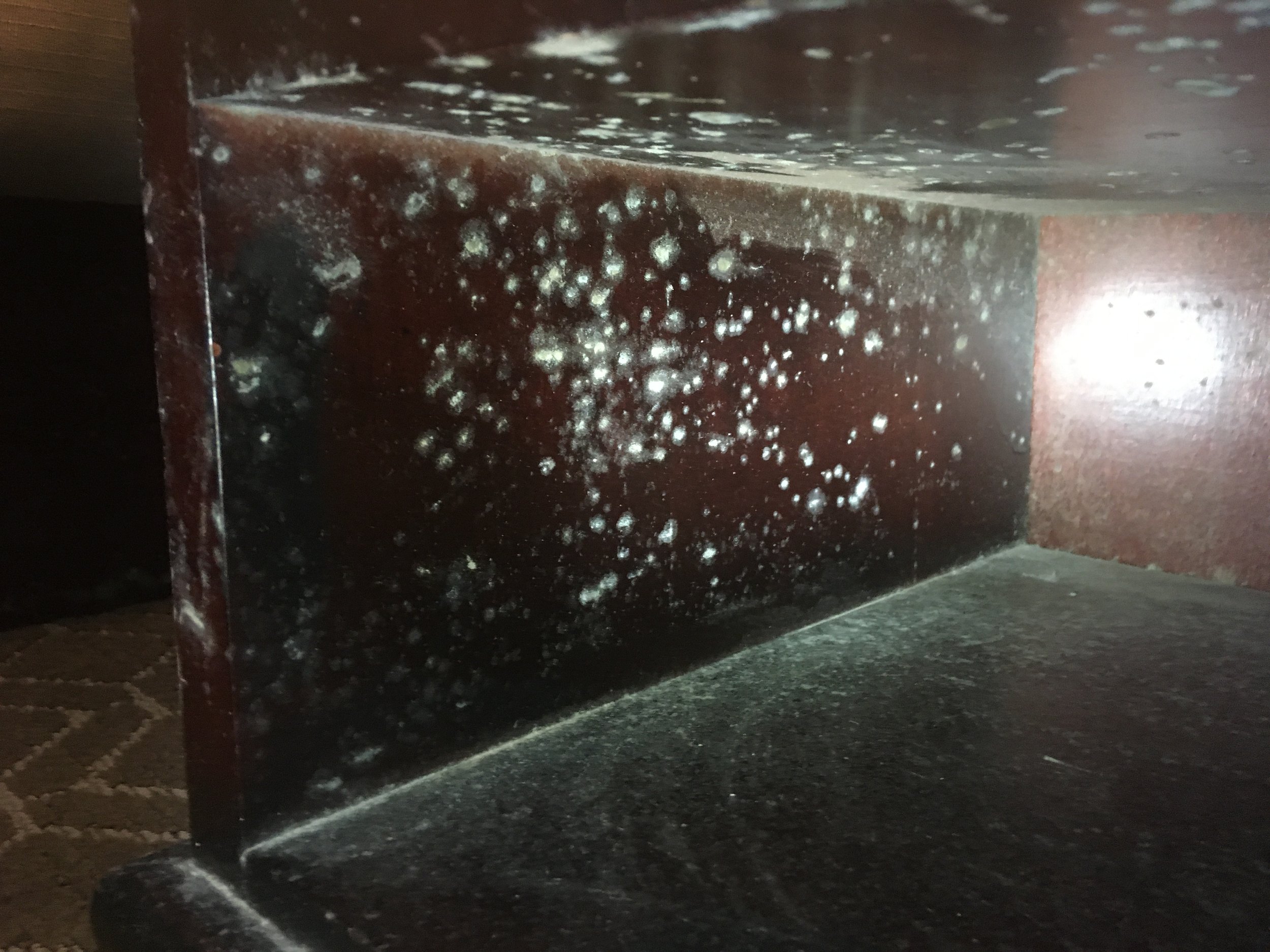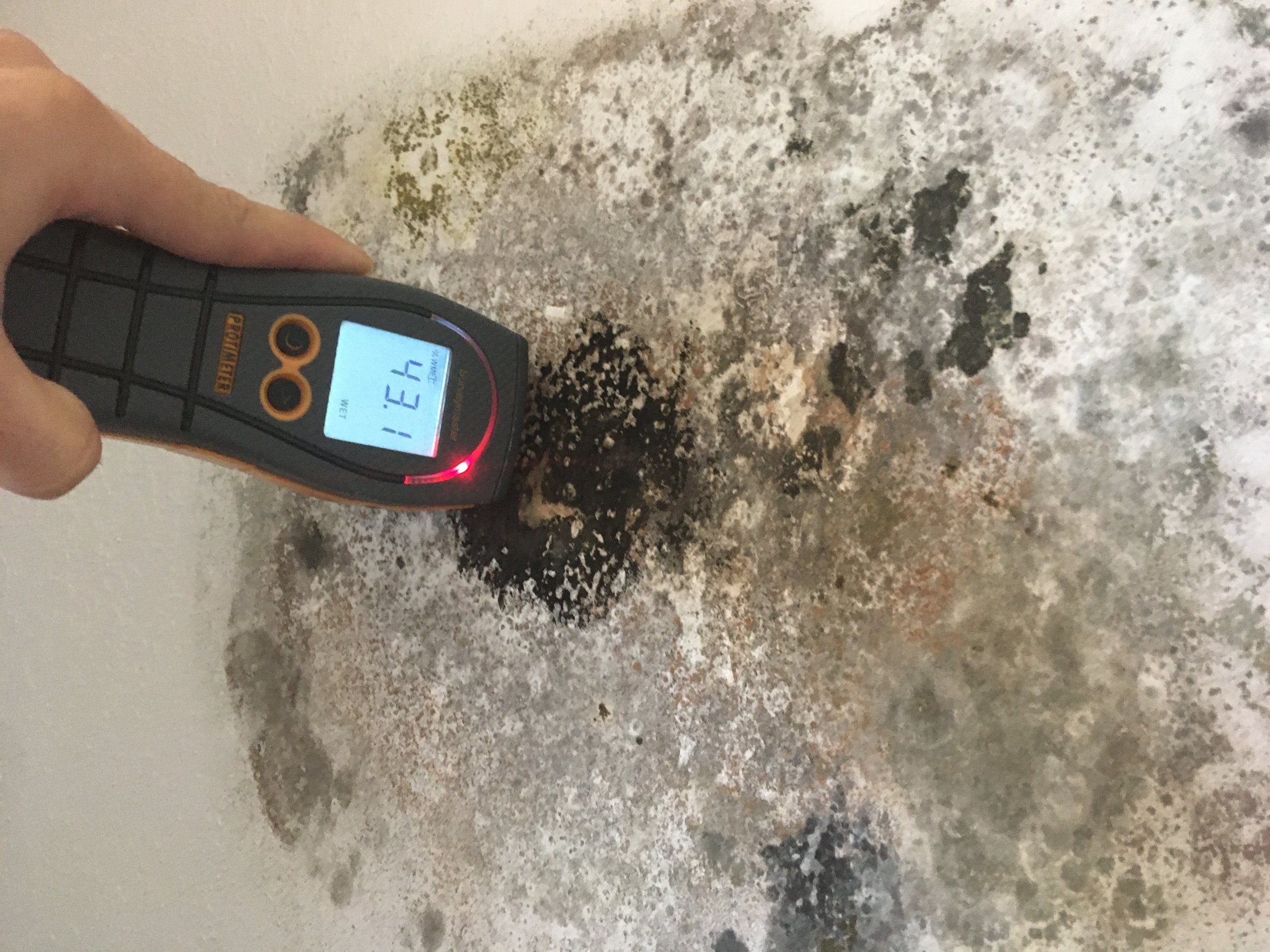Understanding Why Your Building May Have Mold Growth
Combatting Mold Growth with a Property Conditions Assessment
A CASE STUDY



A hotel dating back to the 1850s in downtown New Orleans was experiencing critical issues with its guestrooms. Guests and staff were reporting malodors, smells, and general irritations. Because of these concerns, the historic hotel took nearly 100 guestrooms offline for over two months.
GHP came into this situation and began with a mold assessment, which ended up extending into a property conditions assessment (PCA) specific to moisture problems. Through the PCA, we analyzed the building systems that can lead to water intrusion: the enclosure, interior finishes, roofing, mechanical systems. We also incorporated our forensic architecture knowledge. This combination of expertise allowed GHP to provide an assessment of the building's current conditions and identify the specific issues plaguing the property.
Project Highlights
Timeline:
October 2022
Project Scope:
Conduct a task I mold assessment to identify/address reports of moisture and microbial issues
Undergo a limited PCA of existing conditions and offer recommendations and conclusions based on the assessment
Project Outcomes:
Accomplished a thorough investigation of water intrusion issues
Identified forensic architecture issues
Documented as many of the existing conditions as possible and provided a list of recommendations for corrective action
Project Stats:
150 guestrooms undergoing mold testing
80-100 guestrooms out of service due to heavy malodors, active moisture, and microbial growth
50 guestrooms offline due to general maintenance, renovations, and other in-house construction
Challenges and Objectives
Historic buildings paired with modern adaptations can pose a significant challenge if building systems are not set up for success. The hotel, constructed in the 1850s, was not initially designed to handle today's mechanical systems like HVAC units. The integration of these units into dated architecture can often lead to temperature gradient complications such as condensation, increased relative humidity, and the growth of mold and malodors. Doing a PCA was crucial in order to understand the condition of the hotel building.
Conducting an assessment within an active hotel operation is challenging. Hotels typically maintain an occupancy rate of 80-90%, which makes it difficult to gain access to rooms and other areas for examination. Destructive testing for mold assessments often entails opening up wall cavities to understand the building's construction. Doing this in an occupied environment added another layer of complexity for GHP.
Solutions
Through our mold assessment and PCA reporting, we discovered a host of mold problems, humidity issues, and other obstacles.
Guestroom Observations:
Malodors and a musty odor
Indications of outside air and/or moisture at windows and within the heads and footwalls of the guestrooms
Various surfaces wet to the touch including carpet, carpet backing, flooring, walls, ceilings, and furniture
Visible mold growth and condensation on metallic surfaces
Mold growth and water damage on gypsum drywall walls and ceilings
Non-functioning in-place air handling unit equipment
Negative pressurization in the building compared to the exterior
Exterior Building, Roof, and Envelope Observations:
Cracks in the exterior façade, water stains below windows, and moss/mildew growth
Potential active window and roof leaks
Water pooling from rain events and rooftop units
Non-functional roof and stormwater management systems containing debris or overgrowth that hindered proper waterflow away from the building
Our most critical observation was the negative building pressurization caused by ineffective central HVAC units mounted on the roof. This led to high relative humidity and heavy microbial growth in the upper floors of the hotel, resulting in substantial damage, malodors, and inoperable guest rooms.
We found that the average guestroom ambient temperature was 64-68 degrees Fahrenheit while the inside wall temperature was 87-100 degrees Fahrenheit with over 80% relative humidity. This dewpoint inside the guestroom walls was allowing condensation to form in walls and ceiling voids. With existing dirt and particles in those cavities, it created conditions for mold growth.
GHP also saw excessive vegetation, moss, algae, and mold near air-handling units. This may have hampered proper air intake, further aggravating the ventilation problems.
Results
To address these issues, GHP advised an immediate correction of the building's negative pressurization on the upper floors. We inspected the HVAC system’s air-handling units serving the lower floors in order to ensure they functioned correctly and didn’t contribute to pressurization problems. This improved the indoor air quality and slowed down the rate of microbial growth in the upper floors.
We also recommended a project within six months to redo the most affected guestrooms on the top floors of the building. This included the complete demolition of all sheetrock substrates in the building that showed excess moisture and microbial growth.
The guestrooms located on the lower floors needed less intrusive solutions. These areas only required fine cleaning, surface cleaning, and a mold remediation and stabilization process. This assumed that the central HVAC systems serving these floors did not deteriorate and cause negative building pressurization.
Helping our clients implement these solutions was a significant undertaking, but it was necessary to prevent further damage and provide a safe and comfortable environment for hotel guests.
Conclusion
With proper planning and implementation, any building can be effectively preserved despite maintenance issues. It’s key to diagnosis the problems, understand the details, and devise focused solutions.
GHP’s comprehensive approach to this challenge helped restore a historic hotel. This demonstrates the importance of strategic PCAs in identifying and addressing systemic issues. By doing a thorough assessment, it is possible to prevent further damage and preserve the integrity of historic buildings like this one.
